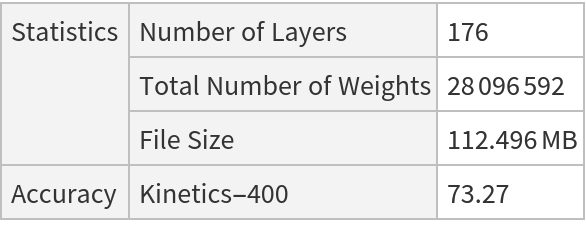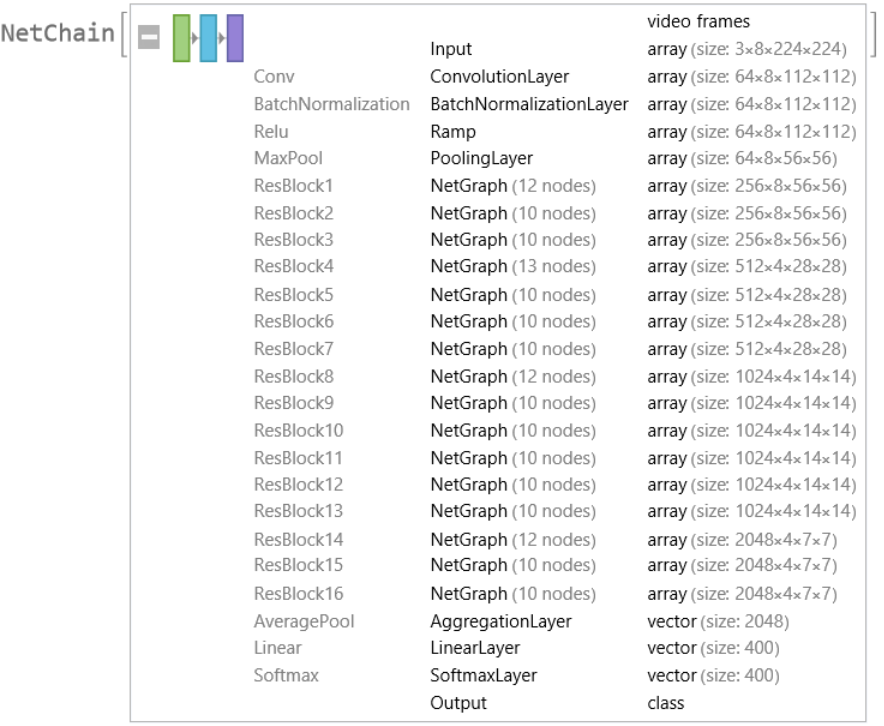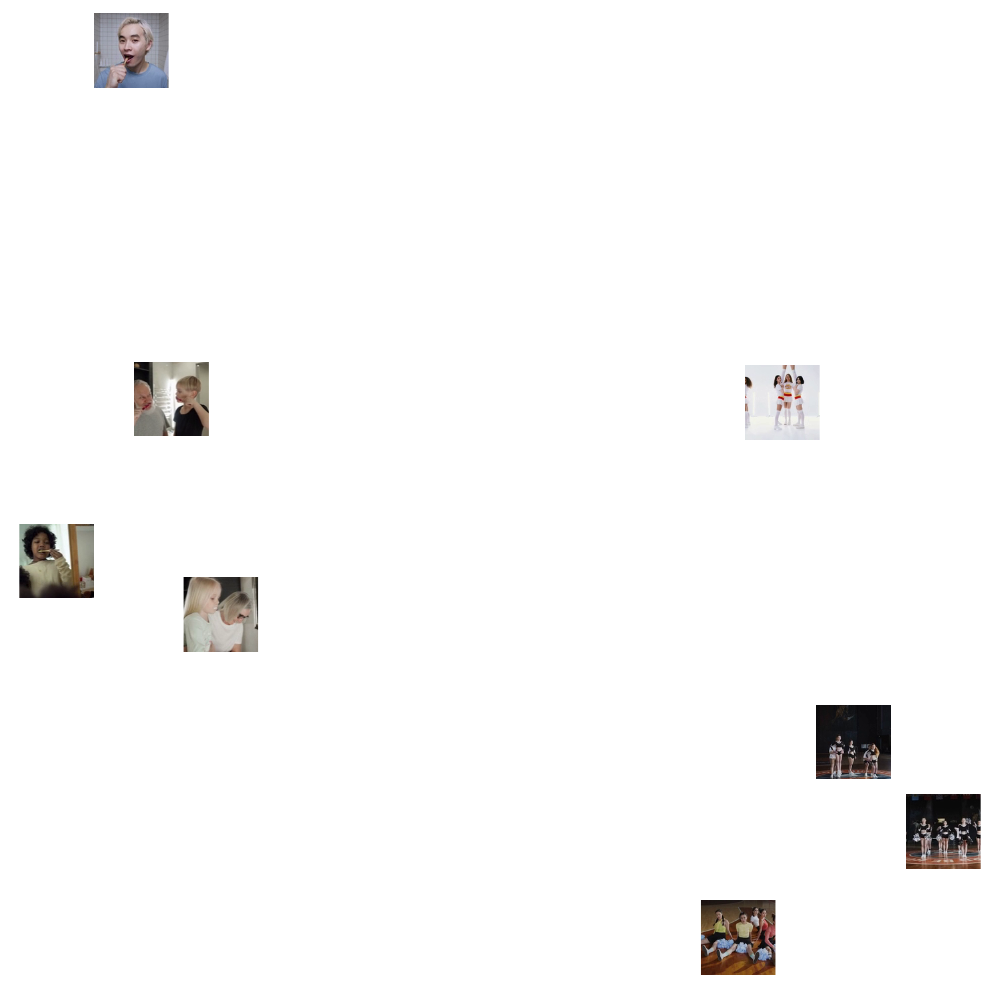3D-Inflated ResNet-50
Trained on
Kinetics 400 Data
This model applies a 3D-inflation technique to bootstrap the kernels of a 3D convolutional network from a 2D ResNet-50 architecture, directly leveraging years of progress on the image domain architectures for video applications. The weights of the 3D convolutional filters were initialized by replicating the 2D filters of ResNet-50 along the time dimension, which can be seen as an implicit pre-training on a video dataset consisting of static ImageNet images replicated across time.
Examples
Resource retrieval
Get the pre-trained net:
Basic usage
Classify a video:
Obtain the probabilities predicted by the net:
Feature extraction
Remove the last two layers of the trained net so that the net produces a vector representation of an image:
Get a set of videos:
Visualize the features of a set of videos:
Transfer learning
Use the pre-trained model to build a classifier for telling apart images from two action classes not present in the dataset. Create a test set and a training set:
Remove the last two layers from the pre-trained net:
Create a new net composed of the pre-trained net followed by a linear layer, an aggregation layer and a softmax layer:
Train on the dataset, freezing all the weights except for those in the "Linear" layer (use TargetDevice -> "GPU" for training on a GPU):
Perfect accuracy is obtained on the test set:
Net information
Inspect the number of parameters of all arrays in the net:
Obtain the total number of parameters:
Obtain the layer type counts:
Display the summary graphic:
Resource History
Reference




![FeatureSpacePlot[videos, FeatureExtractor -> (extractor[{#, #}] &), LabelingFunction -> (Placed[Thumbnail@VideoFrameList[#1, 1][[1]], Center] &), LabelingSize -> 50, ImageSize -> 500, Method -> "TSNE"]](https://www.wolframcloud.com/obj/resourcesystem/images/265/2659dda1-a4f1-41fa-80f9-9b1abdf77d22/6cc8c1ef690e1714.png)

![videos = <|
VideoTrim[ResourceData["Sample Video: Wild Ducks in the Park"], 10] -> "Wild Ducks in the Park", VideoTrim[ResourceData["Sample Video: Freezing Bubble"], 10] -> "Freezing Bubble"|>;](https://www.wolframcloud.com/obj/resourcesystem/images/265/2659dda1-a4f1-41fa-80f9-9b1abdf77d22/5f9e835fe467a651.png)

![dataset = Join @@ KeyValueMap[
Table[VideoTrim[#1, {Quantity[i, "Frames"], Quantity[i + maxFrameNumber - 1, "Frames"]}] -> #2, {i, 1, Information[#1, "FrameCount"][[1]] - Mod[Information[#1, "FrameCount"][[1]], maxFrameNumber], Round[maxFrameNumber/4]}] &, videos];](https://www.wolframcloud.com/obj/resourcesystem/images/265/2659dda1-a4f1-41fa-80f9-9b1abdf77d22/16ac94a34ddded17.png)

![newNet = NetJoin[tempNet, NetChain[{"Linear" -> LinearLayer[2, "Input" -> {2048}], "SoftMax" -> SoftmaxLayer[]}], "Output" -> NetDecoder[{"Class", {"Freezing Bubble", "Wild Ducks in the Park"}}]];](https://www.wolframcloud.com/obj/resourcesystem/images/265/2659dda1-a4f1-41fa-80f9-9b1abdf77d22/541991bb236657b3.png)
